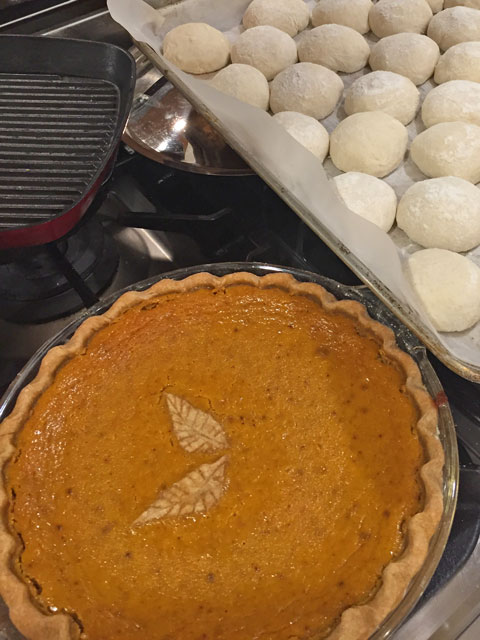Let’s get the confession out of the way first—I did not grow this pumpkin.
Here is the story; for years I have grown a few pumpkins in the backyard. They have never been abundant nor large due to various cultural constraints (space, for one). But, after a period of display for Halloween and autumn color they all get eaten. Years that I did not have a particularly large crop, my neighbor who grows wonderful pumpkins up the street has passed a few Cinderella pumpkins my way. Before the ground squirrels became such a problem at a local community garden, pumpkins were traded there as well.
This year disaster struck. I did not grow pumpkins. My neighbor did not grow pumpkins. The ground squirrels ate every pumpkin, gourd, squash and any other delicious growing thing in the community garden. It was after Halloween and all the pumpkins had been removed from the stores. What ensued was an epic pumpkin hunt all because I refused to use canned pumpkin for the annual Thanksgiving pies.
Although I finally tracked down the heirloom pumpkin featured in the image above, why would these nutritious and long storing fruits be discarded from the grocery stores so hastily? Butternut, banana and acorn squash are available all through the winter, but pumpkins have been relegated to ornamental value only. It is time to rethink this “tasteless” trend.

It is relatively easy to cut up, remove seeds and boil up a pumpkin. I don’t bother to take the rind off before hand because it is easier to scoop the flesh from the rind with a big spoon (throw seeds and rind into the compost). I then put all of the pulp in to a stainless steel mesh strainer and allow the pumpkin to drain for a bit. Then just squeeze out the liquid a bit more by pressing down on the pulp. The resulting liquid is useful for watering outdoor plants because of the nutrients—so don’t throw down the sink!

After making a few pies, I freeze the remaining pumpkin to use for soups, breads and more pies. I freeze in measured batches based on how I might use in the future. The freezing process releases more of the liquid from the cells when defrosting; an added bonus for a relatively dry pumpkin pulp.

Ironically, after all the footwork spent on locating a pumpkin for Thanksgiving pies, someone dropped off a wealth of pumpkins and gourds at the community garden compost pile the very day after! It was an unexpected wealth of color and form. Mind you, they were perfectly good to eat, but no longer required in their ornamental capacity. I think it is possible find a better use for them. Pumpkin curry anyone?

